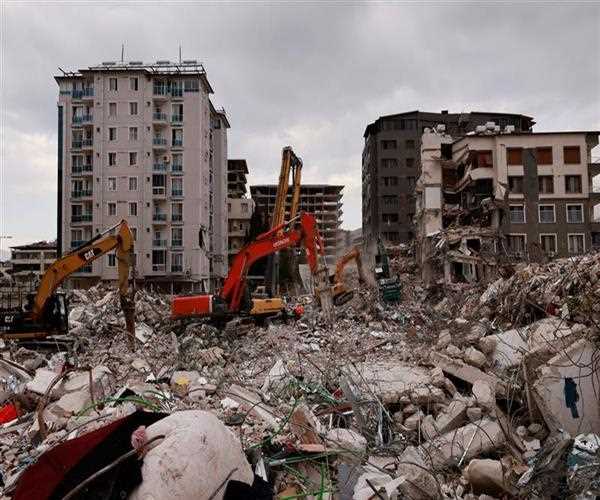
03-Mar-2023
Turkey’s major earthquake and aftershocks
Turkey has been hit with a massive earthquake and aftershocks that have left the entire nation reeling. The country is no stranger to natural disasters, but this recent seismic activity has proven to be one of the most significant in recent memory. With each passing day, more information is emerging about the disaster's impact on local communities, infrastructure, and people’s lives.
Turkey is no stranger to
earthquakes. The country lies in a seismically active region, and experiences several hundred earthquakes every year. However, the earthquake that struck on January 24th, 2020 was much larger than usual. Measuring 7.0 on the Richter scale, it was the deadliest earthquake to hit Turkey in more than a decade.
The tremors were felt as far away as Istanbul and Ankara, hundreds of kilometers from the epicenter.
Aftershocks have continued to cause damage and spread chaos hours after a massive earthquake struck northern Syria and southern Turkey. Since the initial quake, more than 30 earthquakes in Turkey with a magnitude greater than 4 have been recorded, with the strongest occurring at 13:24 local time (GMT +3) and measuring 7.5 Mv.
Multiple aftershocks, some lasting for hours or even days, frequently follow massive earthquakes. These aftershocks add to the destruction and chaos caused by the initial earthquake, bringing weakened buildings to their knees and instilling fear in an already traumatized population.
The USGS defines aftershocks as a series of earthquakes that occur on a fault following a larger mainshock. As part of the "readjustment process" following the main slip on the fault, aftershocks occur close to the fault zone where the mainshock ruptured.
They become less frequent over time, but for a very big mainshock, they can last for days, weeks, months, or even years.
Even though aftershocks are usually less powerful than the main earthquake, they can still do a lot of damage. Aftershocks may have caused significant damage in Turkey following the initial quake, according to reports. Numerous buildings have fallen as a result of aftershocks after the main earthquake, which already weakened the structures.
According to experts, the massive 7.5 magnitude aftershock in Turkey may actually be more destructive. This aftershock was extremely shallow, only 10 kilometers deep, making the trembling even more intense. The main quake had a depth of 17.9 km. Due to their close proximity to the surface, shallower quakes typically cause more intense sensations than deeper ones. This earthquake has been classified as having an intensity of VIII, indicating severe shaking and moderate to heavy damage, according to the ShakeMap, which calculates earthquake intensity. An intensity of IX was reported for the initial quake.
Importantly, aftershocks frequently injure rescuers themselves and disrupt ongoing relief and rescue efforts. Aftershocks will present a significant obstacle for local authorities and international aid organizations as the death toll rises to over 1500.

SEO and Content Writer
I am Drishan vig. I used to write blogs, articles, and stories in a way that entices the audience. I assure you that consistency, style, and tone must be met while writing the content. Working with the clients like bfc, varthana, ITC hotels, indusind, mumpa, mollydolly etc. has made me realized that writing content is not enough but doing seo is the first thing for it.
Join Our Newsletter
Subscribe to our newsletter to receive emails about new views posts, releases and updates.
Copyright 2010 - 2026 MindStick Software Pvt. Ltd. All Rights Reserved Privacy Policy | Terms & Conditions | Cookie Policy